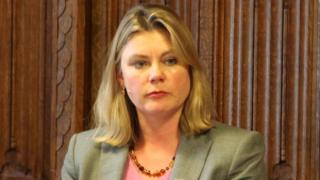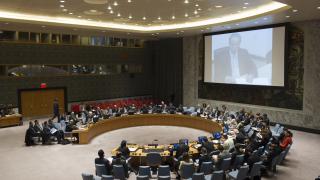
The heat is on. We must act.” With these words, UN Secretary-General Ban Ki-moon introduced the first part of the Intergovernmental Panel on Climate Change (IPCC) Fifth Assessment Report, released on 27 September.
Set up in 1988 by the UN Environment Programme (UNEP) and the World Meteorological Organization, the Panel provides policymakers with regular assessments of the scientific basis of climate change, its impacts and future risks, and options for adaptation and mitigation. The reports are intended to inform government action and international discussions under the UN Framework Convention for Climate Change (UNFCCC) but they do not spell out policy recommendations. They are put together by hundreds of leading scientists and reviewed by thousands of their peers.
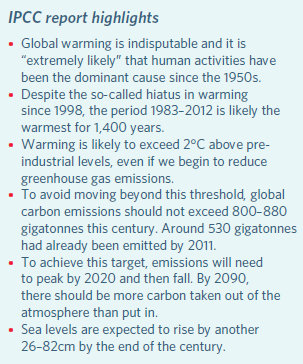 The first part of the Fifth Assessment covers the physical science basis. The IPCC’s last such report, produced in 2007, stated that most of the observed temperature increase in recent decades is “very likely” anthropogenic.
The first part of the Fifth Assessment covers the physical science basis. The IPCC’s last such report, produced in 2007, stated that most of the observed temperature increase in recent decades is “very likely” anthropogenic.
This year’s report upgrades that assessment to “extremely likely”, representing a move from over 90 per cent likelihood, to more than 95 per cent, in IPCC parlance. It also sets out a ‘carbon budget’ for this century, which puts a figure on the amount of CO2 that can be emitted if global temperature rises are to stay below the 2°C threshold agreed by governments at successive UNFCCC meetings. It estimates that we had already used around 60 per cent of the budget in the first decade of this century.
The Kyoto Protocol
At the 1992 UN Conference on Environment and Development in Rio, governments adopted the UNFCCC as a mechanism through which to consider action to limit climate change. Three years later, they began negotiations to agree more stringent greenhouse-gas reduction measures and in 1997 the Kyoto Protocol was created (although it did not enter into force for another eight years).
At its outset, the Protocol bound 37 rich countries to emission cuts amounting to some 4.2 per cent on 1990 levels. Developing states did not take on reduction targets. Pointing to developed countries’ historical responsibility for CO2 build-up, and fearful that limits would impede their development, they pushed for the principle of “common but differentiated responsibilities”. This holds that states’ differing contributions to environmental degradation, as well as their particular circumstances, must be taken into account when determining what action is expected of them.
Symbolically, Kyoto is significant as the first binding international emissions agreement. But it has had little effect in global terms. While the (mostly European) states bound by its targets have exceeded them, much of their success can be attributed to the collapse of polluting industries, the outsourcing of emissions to developing countries where products are manufactured and, to a lesser extent, the economic slowdown.
Meanwhile emissions from emerging economies have risen rapidly, with China overtaking the US to become the world’s largest emitter in 2006–2007. India is now a very distant third. The US itself never ratified the Protocol and Canada withdrew at the end of the first Kyoto commitment period (2008–2012). Overall, global emissions are more than 46 per cent up on 1990 levels.
What next?
Work on a successor agreement to Kyoto began at the 2007 UNFCCC meeting but disagreements resurfaced immediately. In 2009, the UN took a gamble by setting up that year’s meeting in Copenhagen as the now or never moment for a new treaty. The conference ended in disarray, with a weak outcome document that was merely “noted” by the parties.
Since then, there has been some progress. The 2010 UNFCCC meeting formally adopted the contents of the Copenhagen meeting in the Cancun Agreements, under which more than 90 countries have now submitted mitigation pledges. For the first time, this includes all major economies. The US has pledged to cut emissions by 17 per cent on 2005 levels by 2020, India by 20–25 per cent and China by 40–45 per cent. But UNEP projects that even if all pledges are fulfilled, they will deliver less than half the greenhouse gas reduction needed.
Subsequent UNFCCC meetings have focused mainly on what should be done at future conferences. States decided that their 2015 conference should adopt “a protocol, another legal instrument, or an agreed outcome with legal force” that is applicable to all parties from 2020. They have left two major sticking points unaddressed: to what degree the agreement will be binding, and to what extent developed and developing countries’ responsibilities will differ.
In the interim, there is to be a second period of commitments under Kyoto, from 2013 to 2020. As Japan, New Zealand and Russia have not agreed to another round of obligations, this extension now covers countries representing just 15 per cent or so of global emissions.
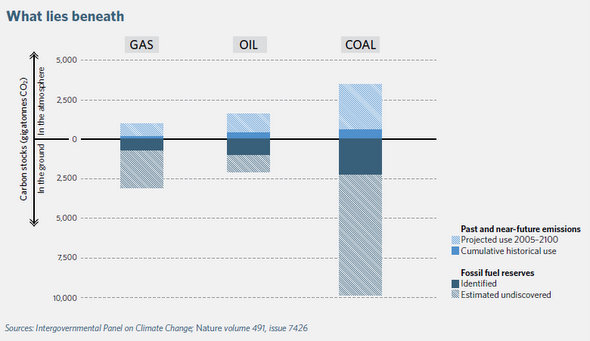
Last tango in Paris
The 2015 meeting in Paris looks set to be another makeor- break moment. Ban Ki-moon has announced that he will convene world leaders in 2014 to mobilise political will and, it is hoped, ease the path to agreement. Ban, who has made climate change a priority during both his terms as UN Secretary-General, is reportedly keen for high-level participation in the process to occur early on, so that the failures of Copenhagen can be avoided.
Can Paris deliver? Negotiators and experts feel that there is little appetite for a Kyoto-style treaty among the major players, such as the US, China and India, which would prefer to see a system of national initiatives. In this emerging model, countries would set their own targets to be tracked under an international framework.
Over the last few years, spurred on in part through the UNFCCC process, there has been a marked increase in domestic action on climate change and environmental degradation. In 2012, Globe International, an organisation of parliamentarians from more than 70 countries, found that 32 of the 33 economies it surveyed, representing over 80 per cent of global emissions, have introduced or are moving towards significant climaterelated regulation and legislation. China has gone from having virtually no green infrastructure in 2008 to a renewable energy capacity of 133 gigawatts – enough to power 53m homes.
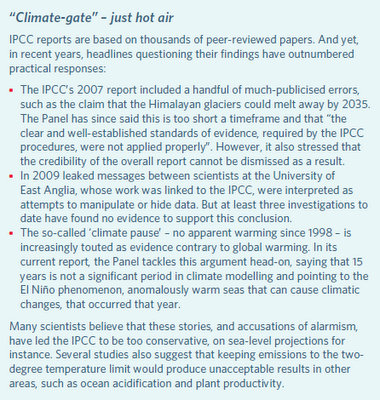 There is a danger that this approach could, in effect, universalise the principle of common but differentiated responsibilities. The US has already proposed that states be able to take into account any “factors they consider relevant” when determining their targets. Many developing countries believe that even under a non-binding regime, their measures should be geared more towards adaptation than emission reductions. The EU, meanwhile, is keen to inject more rigour into the agreement. It would like to see national targets assessed collectively against the backdrop of the 2°C warming limit, and a reviewing process that pushes them to become progressively more ambitious.
There is a danger that this approach could, in effect, universalise the principle of common but differentiated responsibilities. The US has already proposed that states be able to take into account any “factors they consider relevant” when determining their targets. Many developing countries believe that even under a non-binding regime, their measures should be geared more towards adaptation than emission reductions. The EU, meanwhile, is keen to inject more rigour into the agreement. It would like to see national targets assessed collectively against the backdrop of the 2°C warming limit, and a reviewing process that pushes them to become progressively more ambitious.
Such an agreement is a long way off from the robust framework that UNA-UK would like to see. It could, however, be a pragmatic milestone in international action. If it is to work, it will require a high degree of creativity and compromise to ensure that this patchwork of domestic actions becomes a coherent, transparent and effective multilateral framework. To date, such ambition has been sorely lacking.






